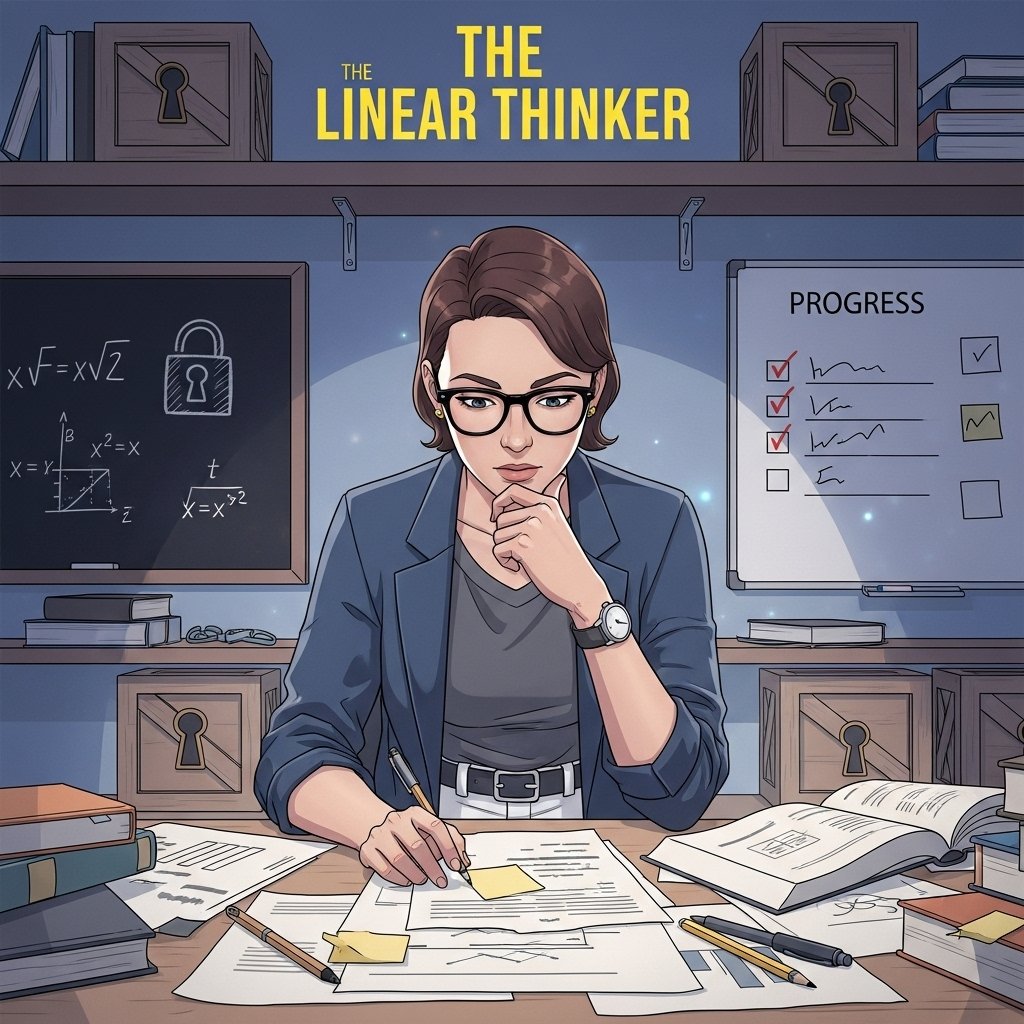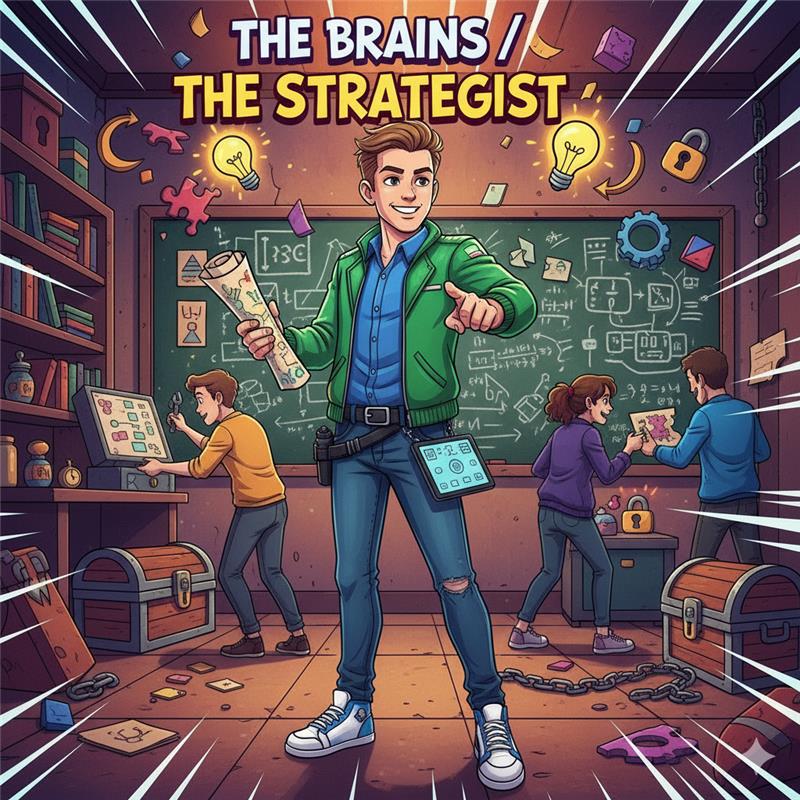Amid the whirlwind of activity that defines escape rooms, few personas are as grounding and indispensable as the Linear Thinker. Known for their structured mindset, disciplined reasoning 🧠, and step-by-step approach, the Linear Thinker thrives where others may become overwhelmed by the sheer variety of puzzles and the chaos of time pressure. While some teammates may jump from clue to clue with bursts of creativity or bursts of adrenaline, the Linear Thinker carefully lays down a path, ensuring the group moves forward in a steady, logical fashion. In many ways, they are the architect of order within an environment designed to challenge it 📐.
At the core of the Linear Thinker’s strength lies their ability to impose structure on chaos. Escape rooms thrive on complexity puzzles are scattered, clues may seem unrelated, and red herrings are placed to confuse and mislead. For a team without direction 📋, this can quickly spiral into wasted time, miscommunication, and frustration. The Linear Thinker counters this by breaking down problems into smaller, manageable parts and solving them systematically. Instead of seeing an overwhelming mess, they create a clear sequence of steps ⚖ ️: what to do first, what to try next, and how each solution might connect to the bigger picture. This ability transforms confusion into clarity, keeping the team on track 🧘.
Yet, the Linear Thinker’s strengths extend far beyond their problem-solving method. Their presence brings reassurance to the team. In moments where adrenaline rises or panic looms, they provide a steady, rational voice reminding everyone to breathe, think, and proceed carefully. Much like the Thinker persona, they embody calm rationality, but with an added emphasis on process and discipline. Where the Thinker may focus on strategy and insight, the Linear Thinker emphasizes execution, ensuring that the team doesn’t just generate ideas but actually follows through in an orderly way.
Of course, this persona does have its limitations. The Linear Thinker’s step-by-step mindset can sometimes become rigidity. In environments that reward creativity, flexibility, and lateral thinking, 🧩 a too-linear approach risks missing unconventional solutions. For example, a puzzle that requires symbolic interpretation or out-of-the-box association may frustrate them, as it does not fit neatly into their structured worldview. Similarly 📋, when faced with teammates who thrive on experimentation and spontaneity like the Explorer or the Break It All the Linear Thinker may clash, perceiving their methods as chaotic or inefficient 🧹.
Yet it is precisely in these tensions that the Linear Thinker’s greatest value emerges. Escape rooms are not about one style of thinking but about the synthesis of many 🎯. When paired with more creative personas, the Linear Thinker provides grounding and organization, ensuring wild ideas are tested systematically rather than chaotically. When combined with competitive or energetic personas, they provide pacing 🧠, ensuring momentum does not outstrip accuracy. Their rigidity, when tempered with the flexibility of others, becomes reliability. Their structure, when balanced with imagination, becomes the framework upon which breakthroughs are built ⏱ ️.


.jpg?w=960px)






